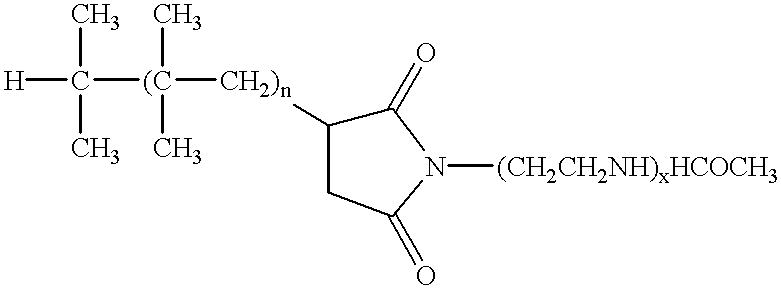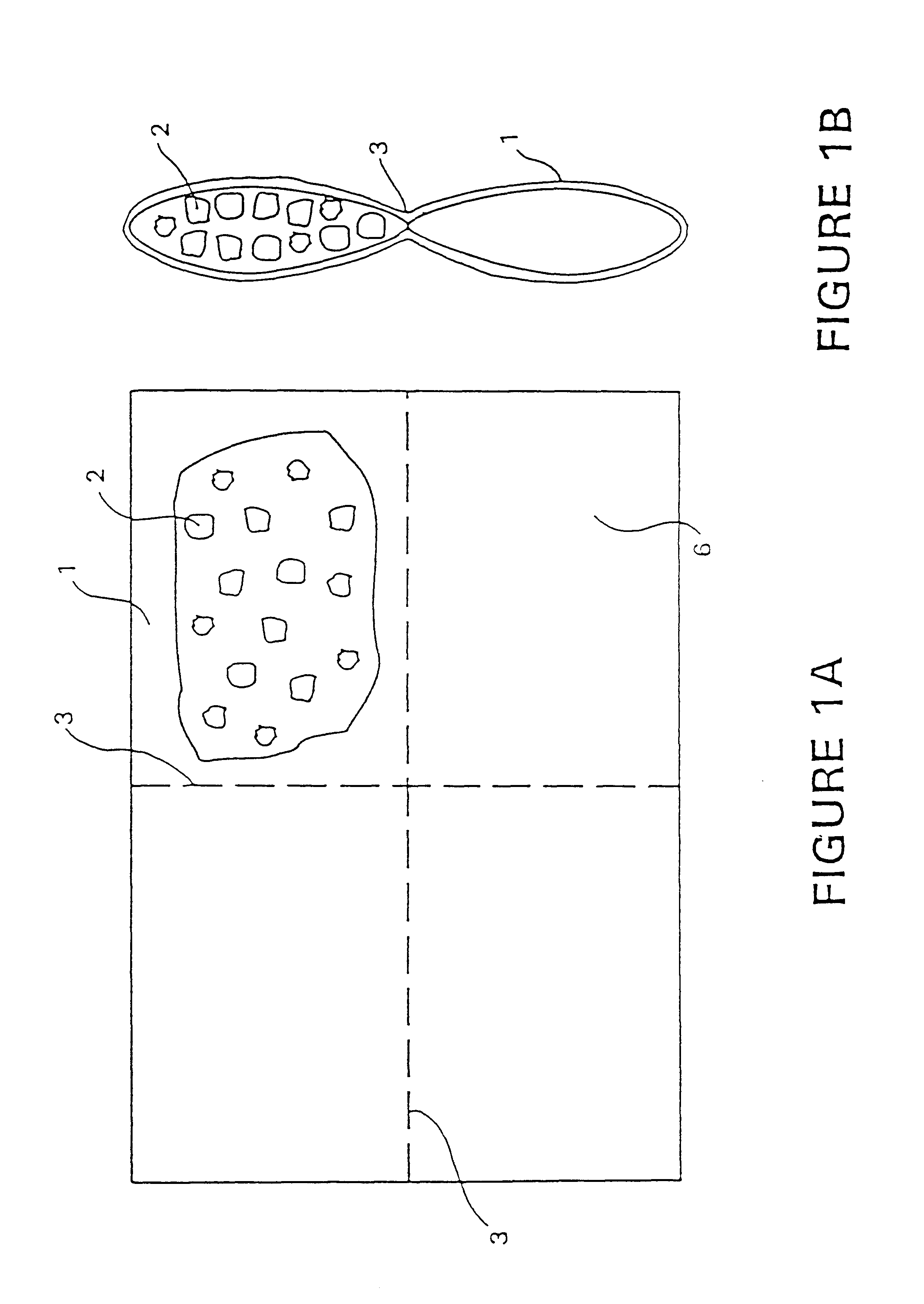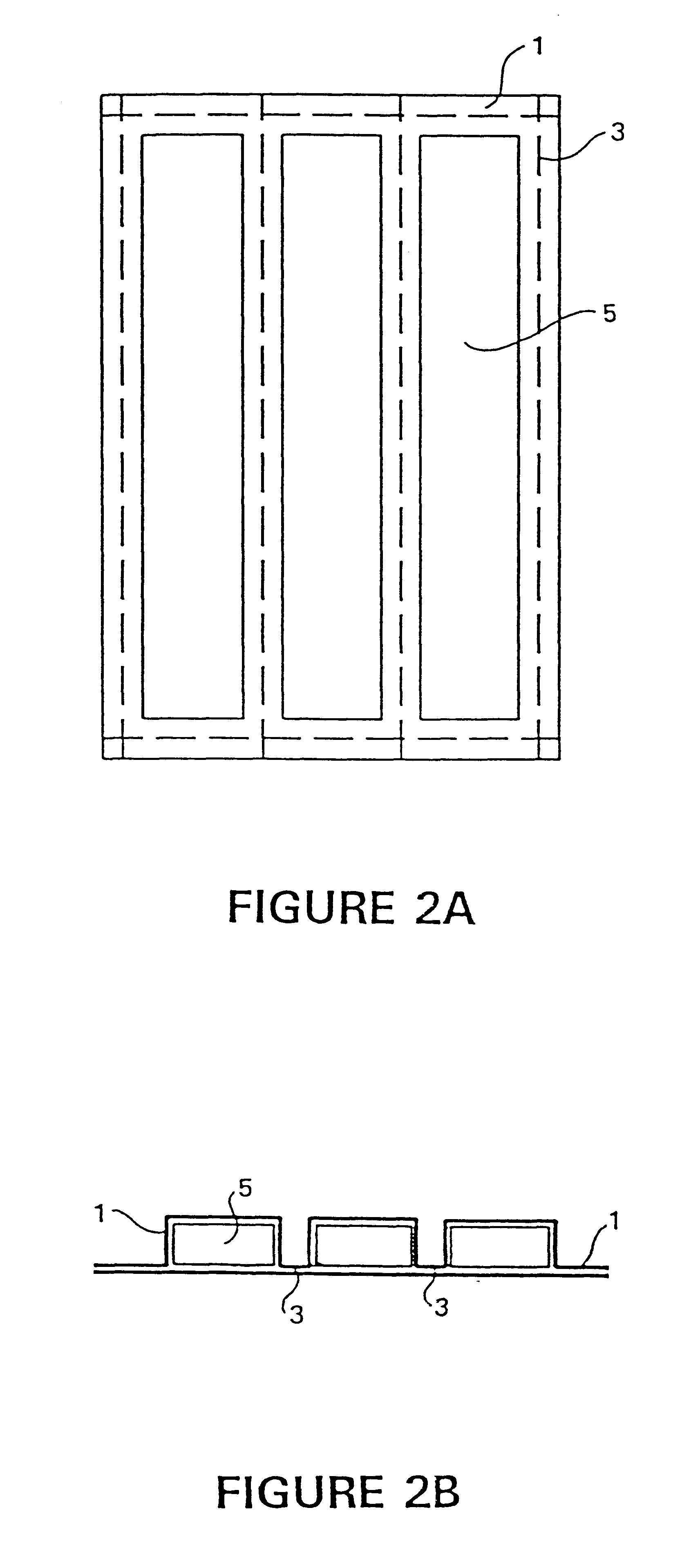Portable heat source
a heat source and portable technology, applied in the field of heat sources, can solve the problems of flammable and/or toxic by-products, low heat production efficiency of many previously known portable heat sources, and material and method previously used in such portable heater sources, so as to facilitate more even distribution of heat-producing compositions and limit such excursions
- Summary
- Abstract
- Description
- Claims
- Application Information
AI Technical Summary
Benefits of technology
Problems solved by technology
Method used
Image
Examples
example
Example 1
Heater using P.sub.2 O.sub.5 / CaO, with Composition Extruded into Pellets.
The P.sub.2 O.sub.5 / CaO ( 1:1 by weight) composition was extruded in the form of pellets. This heater (FIGS. 1A and 1B) produces heat at a desired rate over a selected time period. The heater is formed by mixing the solid powders (P.sub.2 O.sub.5 and CaO), adding inert liquids to control the rate of heat production and facilitate processing, and extruding the composition using a ram extruder, screw extruder, pellet mill, or the like. The composition was prepared by mixing CaO and P.sub.2 O.sub.5 in equal weight ratios, then adding 13.4% or 15.4% of a liquid consisting of 74% white mineral oil and 26% surfactant Actrafos 216. After extrusion through a 1 / 8-inch die on a pellet mill, and cutting the extrusions to a length of 1 / 8 to 1 / 2 inch, the pellets were heated to about 100.degree. C. for 0.5 to 1.0 hour. Heating the pellets leads to improved performance of the pellets. It has been noticed that witho...
example 2
Heater using P.sub.2 O.sub.5 / CaO in a Single-layer Heater
Two or more P.sub.2 O.sub.5 / CaO compositions producing heat at different rates (based on relative concentrations of reactants P.sub.2 O.sub.5 and CaO versus inert materials) were prepared separately and then combined together as powders or aggregates into a single-layered pad to give the desired heat transfer rate over a selected period of time to heat an 8-ounce food bag. The monolayer pad (FIGS. 2A and 2B) was sealed in a polymer-blend scrim to prevent the material from contacting the food bag surface. The monolayer pad was prepared by mixing the ingredients and pressing at about 10,000 psi between two layers of porous scrim. The composition contained 15% inert materials, consisting of the surfactant Brij 30, mineral oil, and paraffin wax, in a proportion by weight of 20%, 30%, and 50%, respectively. The monolayer pad was activated inside a high-density polyethylene plastic sack. The heater was placed beneath the food vess...
example 3
Heater using P.sub.2 O.sub.5 / CaO in a Two-layer Pad
One variation of the P.sub.2 O.sub.5 / CaO embodiment is a two-layer pad consisting of a slow-acting layer on top of a fast-acting layer. Both layers contain CaO and P.sub.2 O.sub.5 in a 1:1 weight ratio, but the layers differ in reaction rates due to the amount of additives present in each. The top, slow-acting layer has a lower concentration of the P.sub.2 O.sub.5 / CaO composition and a higher concentration of inert materials which act to slow the heat producing reaction. The bottom, fast-acting layer has a higher concentration of the P.sub.2 O.sub.5 / CaO composition and a lower concentration of inert materials which act to slow the heat producing reaction. The two layers are formulated to react at different rates to effect a quick temperature rise (by the bottom, fast-acting layer) that is sustainable over a selected time period (by the top, slow-acting layer) at a desired rate.
The rate of heat production in each layer is control...
PUM
 Login to View More
Login to View More Abstract
Description
Claims
Application Information
 Login to View More
Login to View More - R&D
- Intellectual Property
- Life Sciences
- Materials
- Tech Scout
- Unparalleled Data Quality
- Higher Quality Content
- 60% Fewer Hallucinations
Browse by: Latest US Patents, China's latest patents, Technical Efficacy Thesaurus, Application Domain, Technology Topic, Popular Technical Reports.
© 2025 PatSnap. All rights reserved.Legal|Privacy policy|Modern Slavery Act Transparency Statement|Sitemap|About US| Contact US: help@patsnap.com



